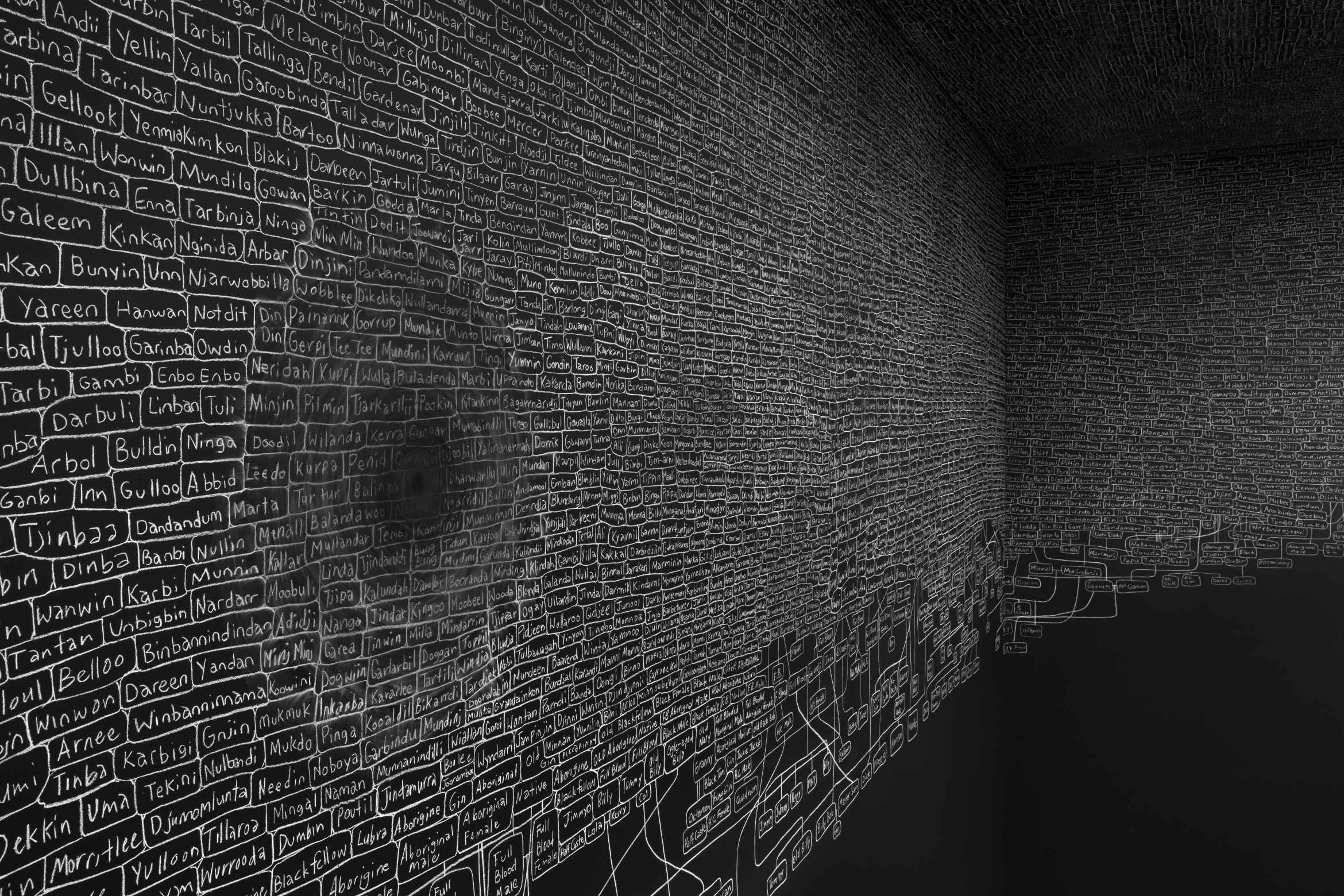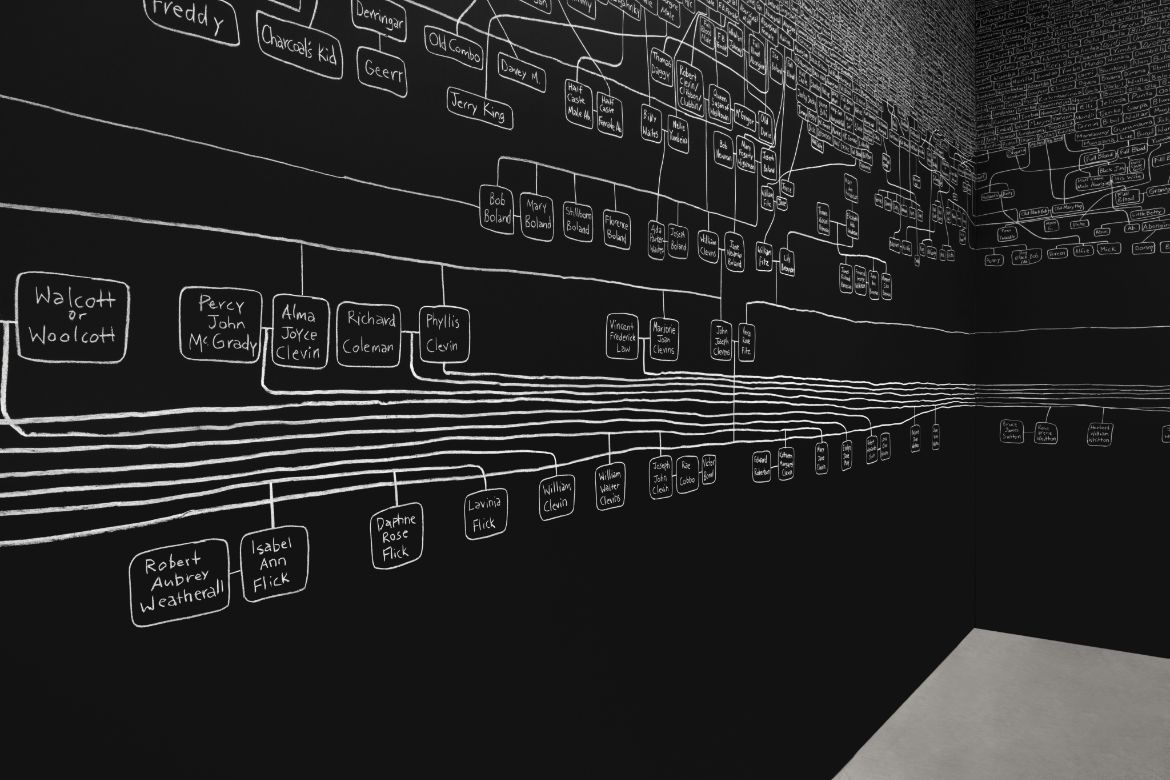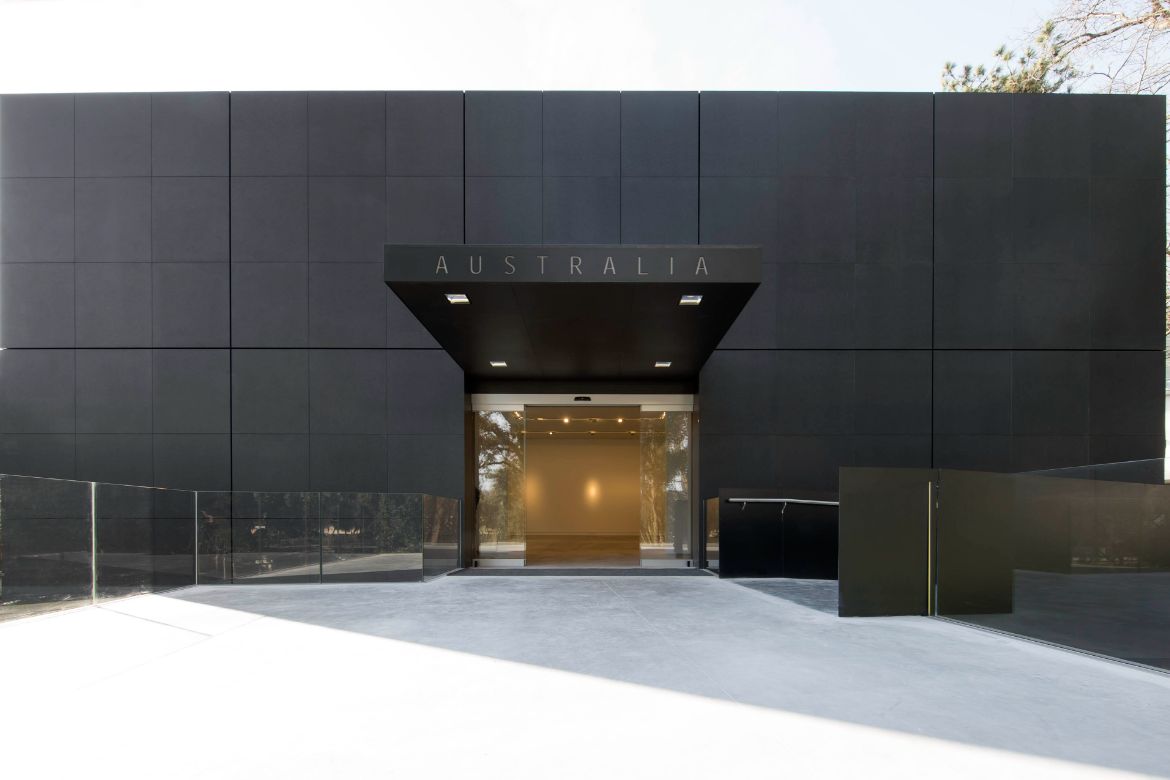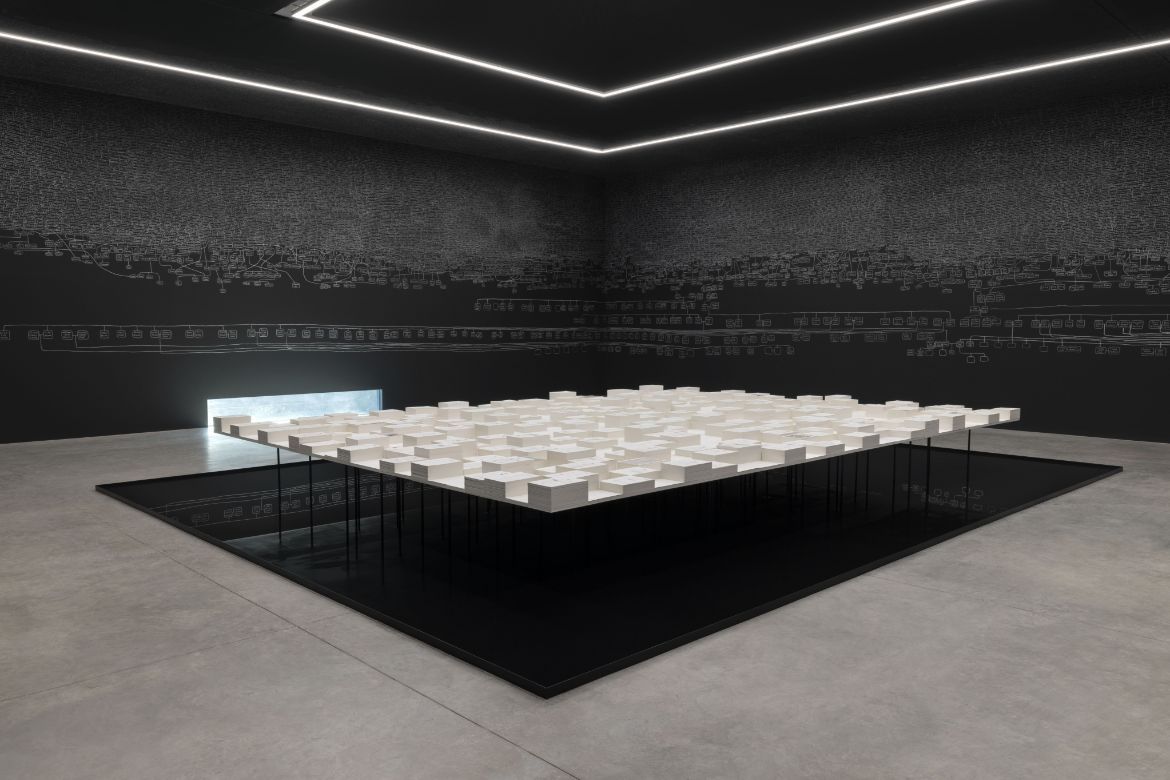Created in-situ over a two-month period, kith and kin by Indigenous artist Archie Moore (Kamilaroi, Bigambul, British and Scottish heritage) comprises a meticulously researched, hand-drawn genealogical chart mapping 2,400 generations of the artist’s ancestry across 65,000 years alongside a display of 500 document stacks that sit atop a reflective pool in the centre of the pavilion.
Curated by Ellie Buttrose and commissioned by Creative Australia, with Kaurareg-Meriam architect Kevin O’Brien as exhibition design consultant, the rigorously researched and thoughtfully executed installation brings an international awareness to First Nations kinship, colonial history, incarceration and deaths in custody. Moore states: “kith and kin is a memorial dedicated to every living thing that has ever lived, it is a space for quiet reflection on the past, the present and the future.” Buttrose, in her catalogue essay posits, “A monumental call to action.”
Related: HAKE House of Art is devoted to “carrying the voices of its artists”

Hand-drawn in fragile white chalk, set against “blackboard” walls, echoing school education systems, the genealogical chart spans the pavilion’s 5 metre walls which run 60 metres in length, culminating in a point of origin in the centre of the ceiling. Commencing with the artist as “me”, the astonishingly vast map envelopes the interior space, where names of people within boxes linked by fluid lines are both legible and abstract marks that ascend into a celestial, ethereal abyss. Buttrose states: “There is a tension between representation and abstraction. There are gaps in the vast family tree; absences of names signal the severing of family ties from massacres and disease.” The chart is also a vivid representation of the decline in Indigenous languages under colonisation, whilst affirming First Nations Australians’ status as the longest-continuous living culture in the world.
At the centre of the pavilion, the dark reflective pool evokes the atmosphere of a memorial. Suspended above are 500 document stacks (typed on white paper with black redactions) which reveal coronial inquests into deaths of Indigenous people in police custody, and harrowingly, dated in our lifetime.

The Australia Pavilion was originally designed by Phillip Cox in 1988 and more recently redesigned by Denton Corker Marshall in 2015. It is commonly known now as a white box within a black box, sitting adjacent to a serene canal. Of the space, O’Brien posits, “The beauty of the pavilion is that it allows the art to come forward. There is a comfortable accommodation of an exhibition that is effectively uncomfortable in content.” Buttrose states, “kith and kin is immersive, audiences move their bodies to experience it. Stretching their necks to see the ancestral names on the ceiling… The archival documents have been designed to hover at a low height so that people reverently bow when viewing. The central black pool reflects names on the walls, but viewers also catch glimpses of themselves surrounded by the family tree.”
With Moore and Buttrose, O’Brien undertook three key moves to achieve the desired experience of the installation: “Firstly, to compress the natural light by reducing the window opening to the canal. Secondly, to subtly detail the supporting furniture (table and benches) to ensure the art came forward. And thirdly, the use of a reflection pool to give a sense of the topography of official documents above on the table floating – just out of reach.” The effect is “a calm but undeniable sense of monumentality,” notes O’Brien. Buttrose adds, “One of the strengths of the artwork is its clarity of expression.”

Buttrose concludes, “kith and kin conveys the vast scale of time and relational complexity of First Nations Australian kinship, and what impacts these connections. If we trace our lineage back more than four thousand years everyone on Earth shares a common ancestor (known as the genetic isopoint) and how we have a familial responsibility to everyone in the world.” Through revealing personal, political, and historical narratives, Moore highlights our shared ancestry and humanity: through the interconnectedness of people, place and time. Yet kith and kin offers hope of a better future for humanity through understanding and unity.
Archie Moore
kithandkin.me
La Biennale di Venezia
labiennale.org
Photography
Andrea Rossett
Images courtesy of the artist and the commercial






Next up: Hong Kong Art Week reinforces the city’s status as a global art centre

